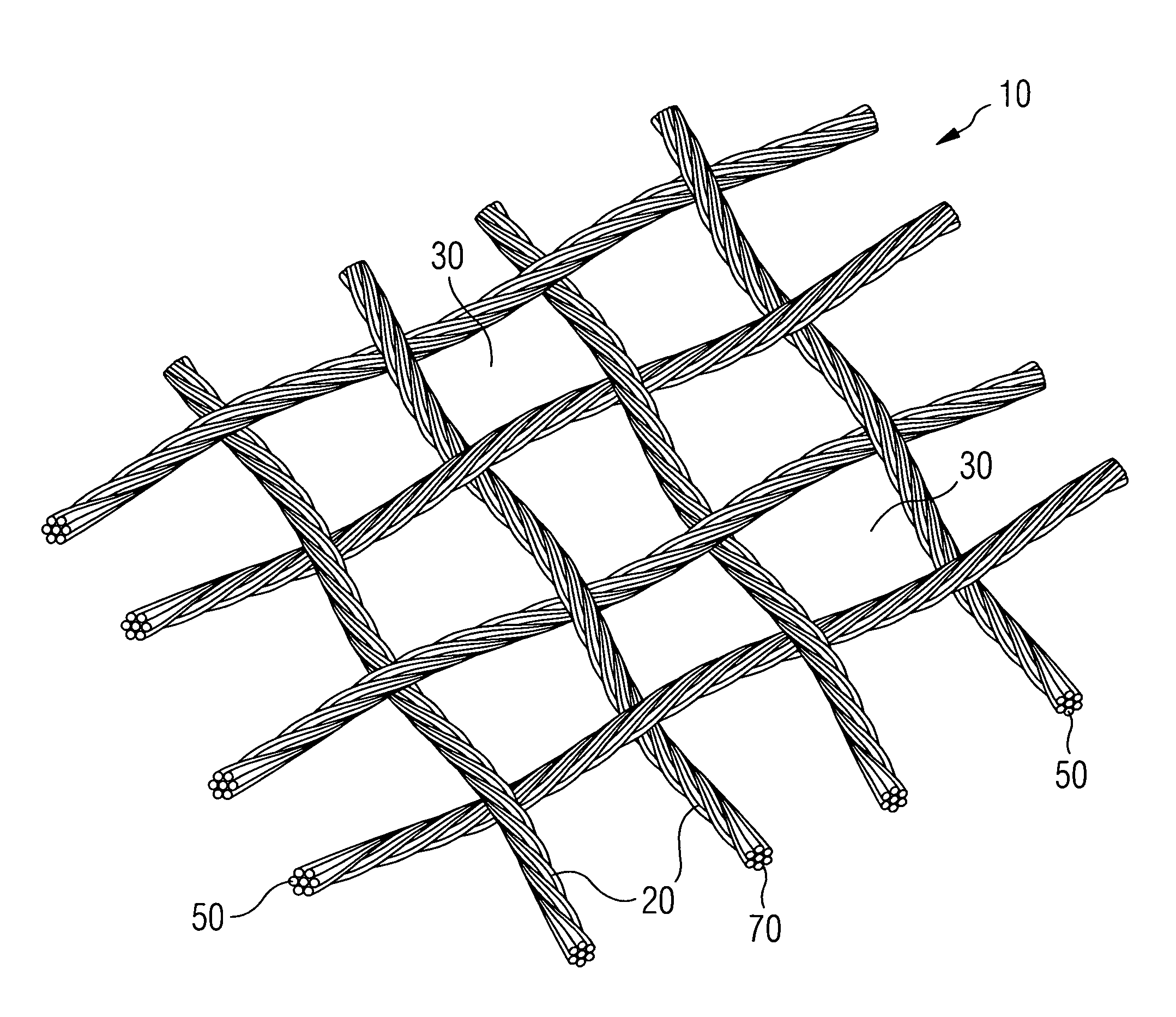Fabric and Fabric Laminate
a fabric and laminate technology, applied in the field of fabric improvement, can solve the problems of loss of the textile nature of the fabric, loss of the water repellentness of the fabric, and wet fabrics, and achieve the effects of no sticky touch, firm grip, and good feel
- Summary
- Abstract
- Description
- Claims
- Application Information
AI Technical Summary
Benefits of technology
Problems solved by technology
Method used
Image
Examples
example 1
[0117]A fabric made of 100% polyester (PES) yarn is used, The fabric is a woven textile made of a filament yarn with a twist level of about 600 turns / m and dtex 100 f36×2. The yarn is non-texturized. The interstices between the yarns have a diameter of about 180 μm-230 μm in the warp and weft direction. Such a woven textile is available from the company SR-Webatex GmbH, Germany.
[0118]FIGS. 7 and 8 show an SEM of the cross section of the yarn of example 1 before the impregnation in different magnifications.
[0119]FIG. 7 shows an SEM of several untreated yarns 20 in the form of fiber bundles in a woven structure with interstices 30 between the yarns 20. Each yarn 20 comprises multiple fibers 50 in the form of filaments.
[0120]FIG. 8 shows an SEM of the cross section of the untreated yarn 20 of FIG. 7 comprised of multiple fibers 50 on a larger scale. Between the fibers 50 of the yarn 20 and within the cross-section of the yarn 20 there are several voids 60 of different sizes.
[0121]The f...
example 2
[0134]An untreated fabric as described in example 1 was used. The fabric was laminated to a waterproof and water-vapor permeable barrier layer using a standard lamination process. A porous membrane made of ePTFE was used as barrier layer 90. The membrane Was manufactured according to U.S. Pat. Nos. 3,953,566 and 4,187,390 and was coated with a continuous layer of water vapor permeable hydrophilic polyurethane as described in U.S. Pat. No. 4,194,041. The resulting membrane will hereinafter be referred as coated ePTFE membrane. To create a two layer laminate the fabric of example 1 was laminated to the ePTFE side of the coated ePTFE membrane using a dot pattern of polyurethane adhesive as described in U.S. Pat. No. 4,532,316. The resultant laminate is a water impermeable, water vapor permeable laminate.
[0135]The laminate was impregnated with a silicone solution SilGel 612 of Wacker Chemie AG having a viscosity of 1000 mPa / s. The same process was used as described in example 1. In the ...
PUM
| Property | Measurement | Unit |
|---|---|---|
| Length | aaaaa | aaaaa |
| Pressure | aaaaa | aaaaa |
| Length | aaaaa | aaaaa |
Abstract
Description
Claims
Application Information
 Login to View More
Login to View More - R&D
- Intellectual Property
- Life Sciences
- Materials
- Tech Scout
- Unparalleled Data Quality
- Higher Quality Content
- 60% Fewer Hallucinations
Browse by: Latest US Patents, China's latest patents, Technical Efficacy Thesaurus, Application Domain, Technology Topic, Popular Technical Reports.
© 2025 PatSnap. All rights reserved.Legal|Privacy policy|Modern Slavery Act Transparency Statement|Sitemap|About US| Contact US: help@patsnap.com



